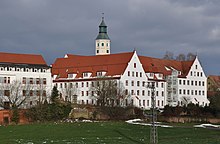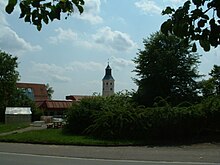Heggbach Abbey
The abbesses and nuns of Heggbach Abbey were drawn predominantly from peasant and merchant families of the villages and cities in the vicinity.
Although major building works were completed under abbess Halwig Wachsgäb (1312-1322), the basic structure and layout of the nunnery, seems to have already been largely finished at around the time of its establishment, since during restoration in 1980 late Romanesque round-arched windows were discovered, as was the northern entry of the enclosure, similar in style, in the west wing.
The lords of Freyberg seem to have been patrons of the abbey since they supported it financially and, in 1493, received the right to use the choir as a burial place for members of their family.
Two of the three co-heirs to the lordship of Achstetten, Eberhard and Hans von Freyberg, sold their rights of patronage over Burgrieden to Heggbach Abbey in 1420.
During the reign of her successor, Agnes Sauter (1480-1509), more altars were added to the abbey church, the chapter house received a chapel and the west wing was extended.
At the end of the 18th century, the territory of Heggbach Abbey encompassed five and two-thirds villages (Baltringen, Baustetten, Maselheim, Mietingen and Sulmingen, as well as possessions in Laupheim), totalling 116 estates with a population of 1,718.
In 1875, the property was bought by Prince Franz von Waldburg zu Wolfegg und Waldsee who left the buildings to Franciscan sisters from the convent in Reute in 1884.







